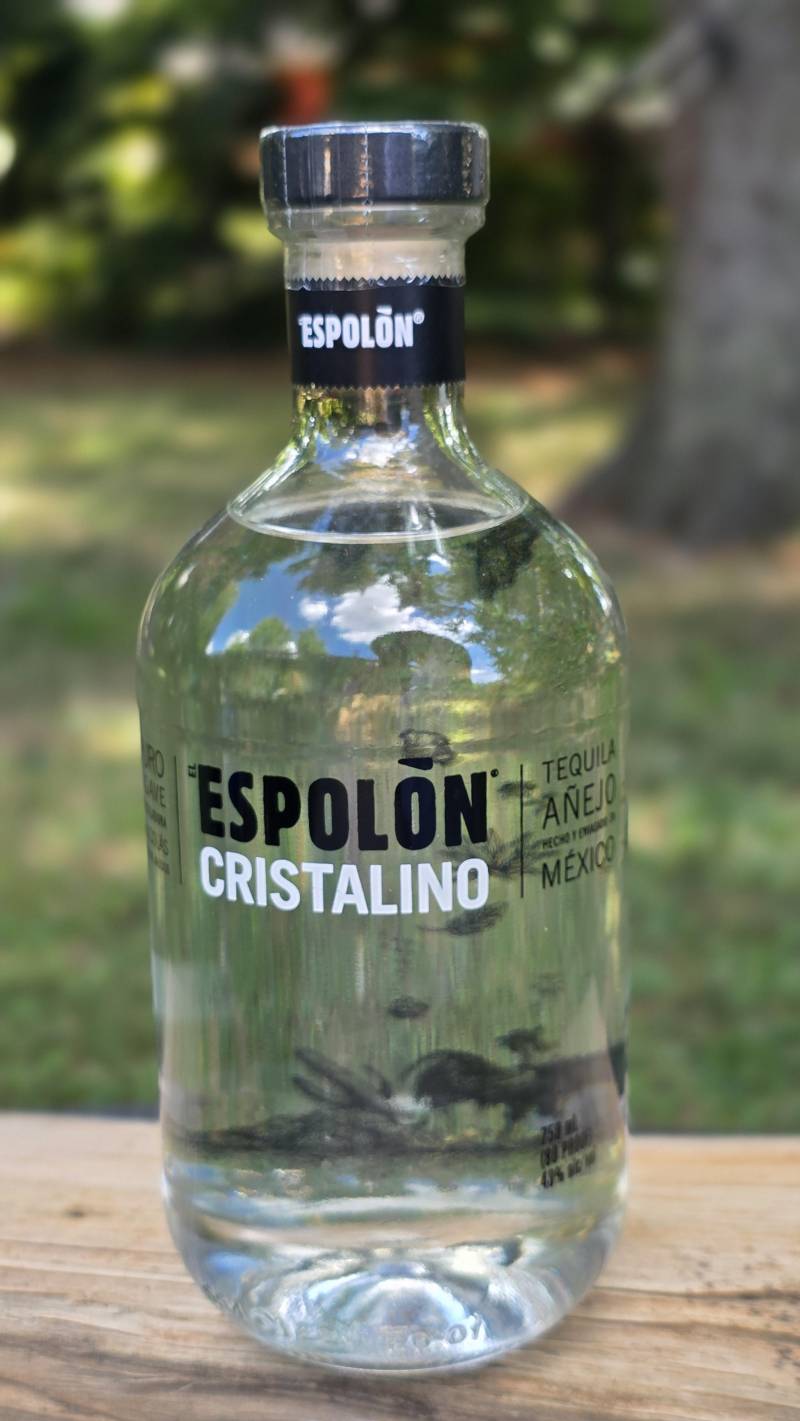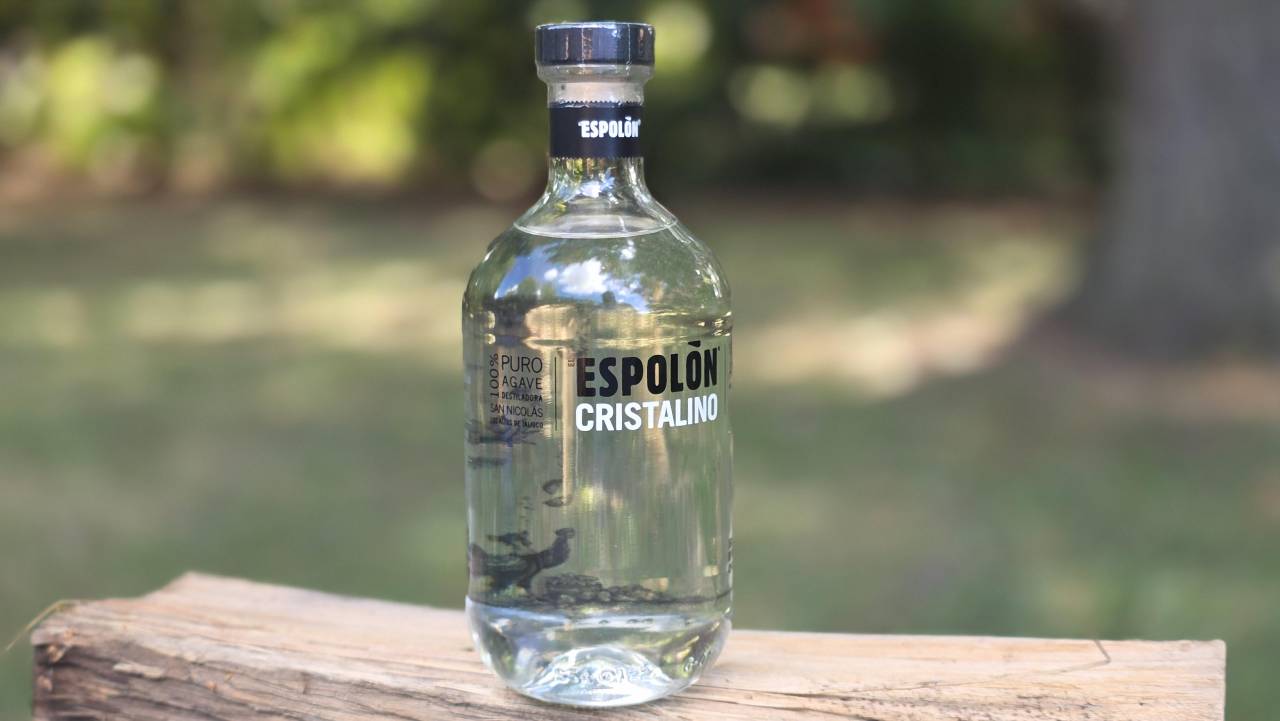Espolon recently sent me a bottle of their Cristalino, and it perfectly illustrates why this category has me captivated. Here's a spirit that looks identical to blanco tequila - crystal clear, no hint of barrel aging - yet delivers the complex, sophisticated character you'd expect from a well-aged añejo. It challenges everything we think we know about spirits, where traditionally, darker means more refined and aged means more complex.
This contradiction represents one of the most intriguing developments in premium tequila - a category that combines the complexity of aged spirits with the visual appeal and smoothness that appeals to both seasoned enthusiasts and newcomers to quality tequila. While most spirits follow predictable rules about appearance indicating age and quality, cristalino deliberately breaks those expectations.
Which Mexican Spirit Is Your Favorite?
Cristalino tequila represents a sophisticated approach to premium spirits that perfectly fits the modern man's evolving palate and diverse social situations.
- Breaks conventional wisdom - Demonstrates spirits knowledge by understanding that clear doesn't mean simple, impressing colleagues who assume aged means amber-colored
- Versatile social tool - Works equally well for neat sipping with dates, elevated cocktails during guys' nights, or professional networking without intimidating less experienced drinkers
- Conversation catalyst - Most people haven't experienced this relatively new category, making you the expert who introduces something genuinely new and interesting
- Bridge builder - Helps transition friends from basic mixing tequilas to premium expressions without the visual barrier of traditional aged spirits
- Premium positioning - Allows you to serve top-shelf quality that looks approachable, perfect for entertaining mixed groups with varying spirits experience
- Cocktail innovation - Enables complex cocktails with aged character while maintaining visual clarity that photography-conscious friends will appreciate
Innovative spirits is what draws me most to both collecting and tasting different tequilas and mezcal brands. Cristalino emerged as a modern innovation in tequila with Maestro Dobel Diamante (2008) widely credited as the first cristalino-style tequila, while Don Julio 70 Añejo Claro (2012) is often cited as the first cristalino añejo that brought the style to mainstream attention.
This innovation has proven remarkably successful - according to industry reporting, cristalino is now Mexico's top-selling tequila style, with 40+ brands offering a cristalino expression. According to Market Research Future, the cristalino sub-segment is valued at $1.25 billion in 2024 with projections to reach $2.71 billion by 2035, expected to account for 6% of the tequila category by 2028.
One of the most fascinating innovations is Cristalino because unlike simply aging in different barrels or using a different agave or just letting it rest longer - Cristalino tequila truly represents a unique expression that blends some of my favorite attributes of Joven or blanco with the maturity of a well aged Anejo or extra anejo.
Producers typically charcoal-filter an already-aged tequila (reposado/añejo/extra añejo) to remove color while retaining oak-derived flavors. Espolòn Cristalino is charcoal-filtered after blending añejo with a touch of extra añejo, while Gran Centenario describes a proprietary process that ends with filtration through Mexican silver. This process requires precision - too much filtration strips desirable flavors, while too little leaves unwanted harsh notes.
The success has expanded beyond tequila to mezcal, with products like Creyente Cristalino Añejo marketed as luxury mezcal innovation. This makes me wonder what this process would be like if applied to rum or whiskey - imagine the possibilities of combining aged complexity with crystal clarity across different spirit categories.
While whiskey has for generations tried mixing flavors and blends together, the broader mezcal category continues to be a wild molcajete of innovation where different ideas are ground together and local influences shape the spirit with the last 20 years making this competition especially acute because of the fierce competition to reach the American market as well as other international markets in Asia and Europe.

Cristalino Tequila Categories: Understanding the Spectrum from Blanco to Extra Añejo
Understanding Cristalino requires context within the broader tequila landscape. The tasting notes below reflect my experience specifically with Espolon Cristalino, though you'll find similar characteristics across other quality cristalino expressions from brands like Don Julio 70, Maestro Dobel Diamante, and Casa Noble Crystal.
Each producer brings subtle variations to the filtration process, but the fundamental appeal remains consistent - a spirit where you can still taste the essence of oak-derived vanilla, caramel and spice notes without losing the floral, peppery agave character that defines quality tequila.
Blanco Tequila: Pure Agave Foundation
Blanco represents pure agave expression, offering crystal clarity with unmasked agave character perfect for mixing applications. The flavor profile delivers bright citrus and pepper notes with herbaceous agave sweetness, creating the clean, crisp foundation that defines quality tequila at typical retail pricing around $29.99.
Reposado: Oak-Kissed Complexity
Reposado adds American oak aging for minimum 2 months, introducing gentle wood influence while maintaining agave character suitable for both sipping and elevated cocktails. The tasting experience reveals caramel and vanilla complexity with subtle spice notes, balancing agave brightness with smooth oak undertones at typical retail pricing $30-32.
Añejo: Mature Barrel Character
Añejo develops through minimum 1 year in oak barrels (≤600L), creating rich complexity with pronounced wood influence for serious sipping occasions. The flavor profile showcases deep butterscotch and chocolate notes with warm spice and lingering oak finish, representing traditional aged tequila sophistication at typical retail pricing $39-41.
Cristalino: The Clear Choice for Complex Sipping
Cristalino bridges reposado complexity and blanco versatility through charcoal filtration that removes color while preserving aged character. Espolon Cristalino delivers rich caramelized agave and honey notes with clean fruit and oak finish, offering smooth complexity without visual intimidation at typical retail pricing $59-65 (varies by market).
Maximizing Cristalino's Potential: Cocktail Applications and Home Bar Strategy
Cristalino excels in applications where you want aged tequila complexity without color interference, creating opportunities that neither blanco nor traditional aged expressions can match.
- Creates visually clean margaritas with aged complexity that blanco cannot provide while maintaining the bright appearance many prefer
- Provides oak backbone for spirit-forward cocktails without the golden color interference of traditional añejo expressions
- Works perfectly in elevated applications like tequila Old Fashioneds where clarity enhances visual appeal while delivering mature flavor
- Allows bartenders to create sophisticated cocktails with complex flavor profiles that surprise guests expecting blanco simplicity
- Offers smooth neat sipping character ideal for entertaining work colleagues or dates without the intimidation factor of dark aged spirits
This versatility makes Cristalino perfect for impressing guests who might be intimidated by traditional aged tequila's appearance while delivering the sophisticated flavor they're seeking.
When purchasing Cristalino, treat it as a premium spirit deserving proper glassware and attention. Serve neat in a proper tequila glass or snifter to appreciate the aroma complexity, and store opened bottles properly sealed to maintain the delicate flavor balance that makes Cristalino special. Note that Cristalino is not a separate legal class under NOM-006 regulations; it's a technique applied to aged tequilas.
Industry Evolution and Cross-Category Possibilities
The rapid growth of Cristalino - from a curiosity to the leading tequila style in Mexico - demonstrates how innovation can reshape traditional categories. Western European markets like Spain, France, and Germany show strong adoption rates as the category expands globally, with major luxury brands launching cristalino expressions in international markets.
The technique's expansion into mezcal suggests broader applications across agave spirits, but the real intrigue lies in potential cross-category experiments. Imagine aged rum undergoing similar filtration to combine Caribbean complexity with crystal clarity, or bourbon treated to maintain flavor while removing color - the possibilities for spirits innovation seem endless when traditional production meets modern technique.
Elevating Your Spirits Knowledge Through Innovation
Cristalino tequila represents the evolution of traditional spirits through innovative production techniques, combining time-honored aging with modern filtration processes. Cristalino literally offers the best of both worlds and I think this is one reason why it isn't part of everyone's portfolio - not only is it a difficult and more expensive process - but with some of the lesser quality tequila brands they use mixers to cover up the cheap tequila and use aging to overcome those imperfections by masking it with wood and the aging process.
The smooth character and visual appeal make Cristalino perfect for various social situations, from casual guys' nights to more formal entertaining. Understanding this category demonstrates sophistication without pretension - exactly what modern men need in their spirits knowledge.
If you are looking for something truly different and unique I highly encourage you to ask your bartender for a taste and maybe even add it to your home bar or keep some on a shelf in your mancave because if nothing else - this bottle will spark questions from your buddies and everyone is going to want to try something new. The innovation behind Cristalino proves that even traditional categories can evolve, creating new experiences that honor heritage while embracing modern technique.
